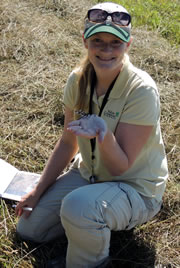Why did the turtle cross the road?
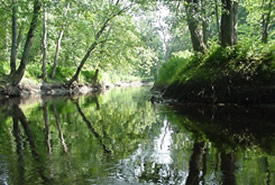
Minesing Wetlands (Photo by Nottawasaga Valley Conservation Authority)
I didn’t expect one of the neatest experiences of my summer to happen while surveying the Minesing Wetlands for road mortality last June. In fact, I’d spent the day preparing myself mentally to have to make difficult observations of turtles and snakes that had been struck and killed by moving vehicles.
This work serves a much greater purpose than merely data collection; it is used to inform Nature Conservancy of Canada (NCC) staff, other conservation practitioners and local governments about where turtle crossing signage or eco-passages should be installed. But getting to those answers isn’t always fun. Check out this NCC map of road survey data identifying the location of road kill in the summer of 2015 at the Minesing Wetlands.
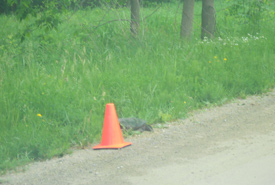
My pylons warn oncoming traffic of the presence of turtles! (Photo by NCC)
I sadly observed my first road kill, a young snapping turtle, on the side of County Road 10 and diligently recorded details about it: size, direction of travel, nearby habitat. Next, I turned my car down Concession Road 2, a favourite entry point of mine into the amazing, internationally significant Minesing Wetlands, and prepared myself for the worst.
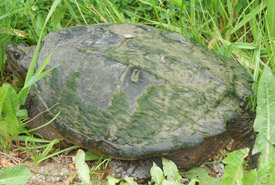
Grumpy girl snapping turtle measuring at least 30 centimetres from head to tail (Photo by NCC)
Instead, I was lucky to find not one, not two, but three large, live, female snapping turtles in the span of an hour! (I assumed they were female because I was right in the heart of nesting season; to realistically determine sex, specific body measurements need to be taken.)
The first was one grumpy girl. Measuring at least 30 centimetres from head to tail, she did not want the help of my little hands assisting her with crossing the road — which she showed to me by a few quick snaps of her jaw (for the brave, you can hold the back ends of the shell of a snapping turtle and “wheelbarrow” it across a road to ensure its safe passage to its destination out of the path of oncoming cars).
I realized soon after I let her finish crossing that her mood was likely due to her next move, which was to start patiently digging in the sandy shoulder of the road. She was making a hole for the eggs I then understood she was carrying.
Not wanting to disturb her further, but wanting to ensure she could finish the job safely, I placed one of my Official Road Mortality Surveyor pylons (a Canadian Tire-bought orange cone I’ve purchased for just such occasions) beside her to warn oncoming traffic of her presence and give her some space. Later when I went back to remove the pylon, I could see an area of freshly disturbed soil and grumpy girl was nowhere to be found.
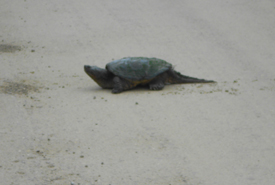
Road crossings can be a dangerous activity for slow-moving turtles who may not be immediately noticed by drivers (Photo by NCC)
The next turtle, found at the side of the road adjacent to a cattail marsh, was much more docile and stared politely back at me. There was a small area of recently disturbed sand that connected to tracks from this turtle. It seemed that she may have been digging a “test pit,” which these turtles will often do before finding the perfect spot to lay their eggs.
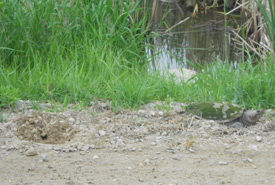
Female snapping turtle caught in the act of digging a nest pit on the side of the road (Photo by NCC)
The third lady was caught in the act of digging a hole into the shoulder just down the road (turtles were basically as frequent as lampposts in the suburbs along these rural backroads of Minesing, on this particular day!) but she slipped back into the marsh when she saw my car approaching. I’m hopeful she found another perfect spot to lay her eggs after I’d driven away.
Though I recorded another roadkill later that day, I was on cloud nine from seeing the successful breeding activity of not one, but three, at risk snapping turtles. It’s inspiring to know that the protection of the Minesing Wetlands (by NCC and the Nottawasaga Valley Conservation Authority) has allowed the successful perpetuation of this species, and many others, that live in this area.
So, why did the turtle cross the road? To show me conservation is working!
This summer be cautious when driving around wetland areas between May and Septembers when reptiles are active. They often seek out warm pavement or sandy road shoulders for basking and nesting activities. If you come across an injured turtle, contact an organization in your area that might be able to help such as the Kawartha Turtle Trauma Centre, which has volunteer "turtle taxis" that shuttle injured turtles across Ontario to the trauma centre for care.

